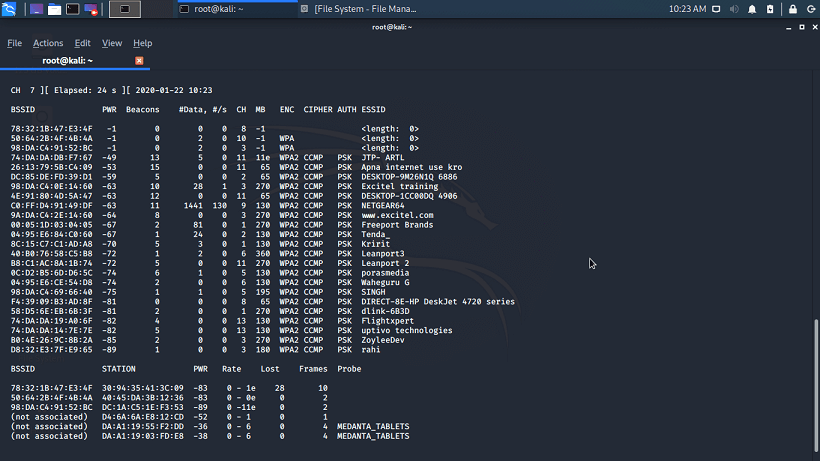

#KALI LINUX HOW TO USE WIFI PASSWORD#
In this case, our Yeahhub wireless password is “ 12345678“. Now we’ll generate a configuration file for wpa_supplicant that contains the pre-shared key (password) for the WiFi networkĬommand: wpa_passphrase Yeahhub > /etc/wpa_nf In below screen, as you can see that the SSID name is “ Yeahhub” which we need to connect and the security protocol is RSN, also commonly referred to as WPA2 Protocol. Next step is to scan all WiFi networks near by your adapter by typing the following command: You can also check the WiFi network connection status by typing “ iw wlan0 link” which shows Not Connected at this time, because we didn’t connect yet. Now confirm the same by typing, “ sudo ip link show wlan0” to check the status, and now it shows UP 🙂

Use the following command to bring up the wifi interface i.e. It is used for enabling/disabling devices and it helps you to find general networking information. Ip is used to show / manipulate routing, devices, policy routing and tunnels. Next step is to check the device status whether your wireless device is UP or DOWN by typing the following command: The old tool iwconfig, which uses Wireless Extensions interface, is deprecated and it’s strongly recommended to switch to iw and nl80211.įrom above output, it seems that we’ve only single wireless adapter whose interface name is “ wlan0” and designated as phy#0 and of type managed (means the device is a Wi-Fi station or client that connects to an access point) and hardware address (Mac Address) is 42:97:d7:db:b7:ef.Īlternatively, you can also find out all the above things by typing “ iwconfig“.
#KALI LINUX HOW TO USE WIFI DRIVERS#
It supports all new drivers that have been added to the kernel recently. Iw is a new nl80211 based CLI configuration utility for wireless devices. The first step is to find the available wireless adapters which you can easily list out all by typing the following command: Today we’ll show you a detailed step by step tutorial which explains how you can connect to a Wi-Fi network in Kali Linux from terminal. The 802.11 Working Group introduced the 802.11i amendment as the final stage of the Robust Security Network standard, superseded the old WEP technology.

Today, Wireless Network has become more and more present in open area or large companies and security enhancement is needed to control authentication and confidentiality.


 0 kommentar(er)
0 kommentar(er)
